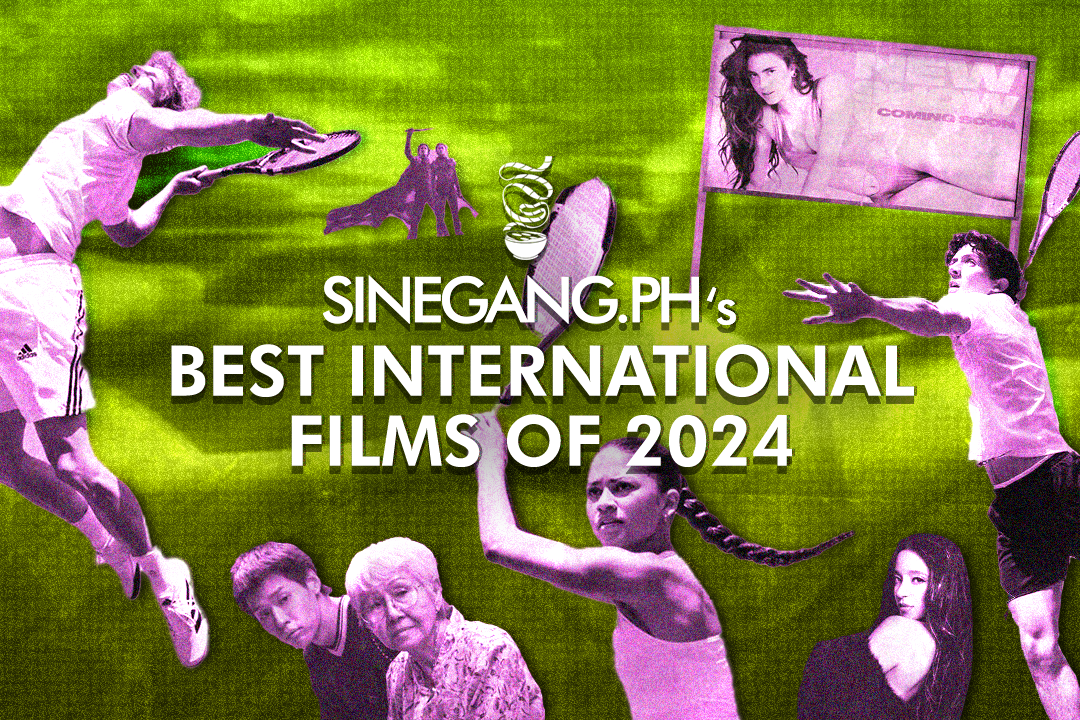Exploring the Contemporary Asian Cinema: Central Asia
Exploring the Contemporary Asian Cinema: Central Asia
Film is an incredibly powerful medium. Films express a country's identity, more than merely as a source of entertainment; especially in Asia, where there are multitude of cultures and origins. Asia has long been an important part of world cinema, but its unique contributions have never gotten the credit and recognition they well deserved.
I have always been enamoured by Asian cinema. Despite the differences in culture and history, there is a sense of belonging among them. It has always struck a chord with me in some manner. Asia is known for its rich culture, tenacity, and uniqueness. Their films document not only the all-inclusive human state of mutual affection and misery, but also the diverse forms of expression and creativity found throughout the region.
I'd like to see more Asian films celebrated because I think they are frequently overlooked in film discussions. I'm hoping that by writing this article, I'll be able to bring more attention to these films and directors, and perhaps introduce them to more audiences.
Central Asia
Located between the districts of Russia, Middle East, and East Asia, the tremendous breadth of Central Asia comprises of the former Soviet republics of Kazakhstan, Kyrgyzstan , Tajikistan, Turkmenistan, and Uzbekistan.
Central Asian Cinema became a medium that portrayed a unique identity of its own. These countries exemplify a perplexing amalgamation of rich cultures and ideas that best represents not only their cinema but their nations as well. Central Asian cinema has developed greatly over the years, with a legacy of filmmaking reaching back to the 1920s, from several phases of the post-Soviet film era and conflicting ideologies of nationalism, from propagandist films to more social realist films, and through diverse historical times; their films have evolved into a political movement, with each picture addressing a different societal issue.
From pure and serene cinema to western inspired epics, here are some of the films that I have explored from Central Asia:
Harmony Lessons (2013) dir. Emir Baigazin
Harmony Lessons (2013) – Kazakhstan
Kazakhstan has long been in the world of cinema, during their Soviet era, Kazakhstan cinema was known for creating Soviet documentaries. After their independence, a new wave of Kazakh filmmakers emerged and ever since then they have been getting some recognition from recent years; Mongol (2007) was nominated for the 2007 Oscars' for Best Foreign Language Film and Yellow Cat (2020) was nominated for Best Film at the Venice Film Festival.
Emir Baigazin's debut feature Harmony Lessons also received a Silver Bear at the 63rd Berlin International Film Festival, a film that is bound and determined to show the outright ugliness of human beings. Harmony Lessons is a gloomy Kazakh drama about a young boy named Aslan who dwells in a remote rural village in Kazakhstan and is constantly being bullied by his classmate Bolat, who also works with gangsters. Adults aren't entirely absent from Harmony Lessons. They are never, however, the ones who seem to be the pillars of society or those who move the threads. Harmony Lessons is bleak, but also quite sad and poetic in some ways. It has a cold, stark feel to it, with its restricted neutral tones and its simplistic setting. Its use of surrealism and allegory to dig deeply into the disintegrating psyche of its protagonist is quite haunting and subtle. Harmony Lessons is a great place to start exploring Kazakhstani cinema. Baigazin captures incredibly naturalistic expressions from his cast of amateurs while simultaneously exploring a society dominated by the oppression of the weak by those in power. From the state brutality to school bullying, the picture reflects an expanding cycle of abuse in a society dominated by the fallacious premise of survival of the fittest.
The Adopted Son (1998) dir. Aktan Abdykalykov
The Adopted Son (1998) – Kyrgyzstan
Much like every other Central Asian country, Kyrgyzstan also became a hub for documentary films during the Soviet Era and there were frequently small differences in their content. Kyrgyzstan also made some western inspired epics like White Mountains (1964), a film that shows how globalization can be detrimental to cultures. Melis Ubukeev's debut feature is a poetic and wholly stunning picture that momentarily deviates from the usual narrative structure in lieu of simply visual filmmaking. The film allows you to take in the immensity of the landscapes and the raw beauty of the surroundings that also becomes a fitting analogy for the difficult yet modest living of those who manage to make it through the daunting terrain of White Mountains.
After their independence, Kyrgyzstan made films that dealt with social issues as well as films like Aktan Abdykalykov's The Adopted Son (1998), it is part of some of the first films made in post-Soviet era. It also won the Best Film Grand Prix at the 1st Eurasia International Film Festival. It's a poetic story about a young boy who's in his adolescence; it is rather universal in subject, The Adopted Son is a stunning film both shot in color and black & white. Abdikalykov's poetic language was always modest and introspective and never dogmatic; it also achieves a degree of complexity that, in my view, many directors strive for.
Luna Papa (1999) dir. Bakhtyar Khudojnazarov
Luna Papa (1999) – Tajikistan
Propagandist films with a focus on secularism dominated Tajik cinema during the Soviet era. Very much like what occurred with each and every country from Central Asia, Tajik cinema during their initial long stretches of freedom was nearly ruined because of the absence of film productions; social and economic issues were at present, and films aren't clearly the first concern of the majority of these new administrations. Today, fortunately they were being revived and revitalized through the endeavors of their new government and as well as support from Iran and other countries.
Despite several mishaps in their own country, Tajikistani filmmakers have managed to make at least a slight impact on the international film scene. Notable directors from Tajikistan after independence include Jamshed Usmonov, who wrote and directed To Get To Heaven, You First Have To Die (2006), and Bakhtyar Khudojnazarov, who directed Luna Papa (1999), which won the Silver Lion award at the Venice Film Festival. Luna Papa is a work that fits perfectly in the purity of its characters; something that feels somewhat out of this world. It is built on an impeccable sense of satire, folkloric charm, and immanent fantasy realism. It shows a postmodern view of Tajik life. There's this sense of eccentricity that lies within the film, the genre being a little surreal, a little slapstick, it's a very playful way to tell a story. Overflowing with excitement and silliness, Luna Papa is an endearing Tajik film that makes the most of its scenic surroundings.
Little Angel, Make Me Happy (1993) dir. Uzmaan Saparov
Little Angel, Make Me Happy (1993) – Turkmenistan
Turkmenistan Cinema prospered for a brief time during the early years of their independence after being completely shut down by their now late president Saparmurat Niyazov. Founders of Turkmenistan Cinema all fled to Russia and all forms of art and foreign cultural influences were crossed off from the country. Although, before all that transpired there were still a few notable films. Uzmaan Saparov's Little Angel, Make Me Happy (1992) was one of the rare films that shine and be recognized outside the country, being invited to Kinderfilmfest at the 43rd Berlin International Film Festival. It was a remarkable social realist film set in Turkmenistan during World War II's second phase and centered on the deportation of Soviet citizens of Germany. Saparov paints a picture of a new wave of refugees that impacted the Turkmen nation, combining the trauma and losses suffered by both Turkmen and Germans throughout the conflict. His simple and quite endearing story still manages to be an impactful Soviet wartime narrative, really showing the effects that war brings on people.
With their now new president, Turkmenistan is trying to revive their own cinema, starting from restoration of old classics and renovation of old cinemas. A new generation in Turkmen cinema emerged, and hopefully more films will be produced.
The Orator (1998) dir. Yusup Razykov
The Orator (1998) – Uzbekistan
Unlike other Central Asian countries, the film industry in Uzbekistan has been thriving for quite a long time; many films have been produced throughout the years, and there are no signs of it slowing down, as the current administration continues to support film productions. One of the prominent films from the region is Yusup Razykov's The Orator (1998). A historical film about Iskander who becomes a spokesman and representative of the new communist state in Uzbekistan. Razykov presents a nuanced film that captures the complicated conflicts between Islamic tradition and Bolshevism, unfettered by the ideals and cultural restraints brought by the Soviet era. It's a political satire that combines themes of revolution and social change. It is undoubtedly one of the most important films in Uzbek cinema; eloquently conveying the significant repercussions that happened on Uzbekistan’s society during the Soviet era.
Uzbekistan still continues to make films until to this day, while they’re not as recognized as the films from Kazakhstan and Kyrgyzstan, Uzbekistan still continues to produce films for its own market. There are Yalkin Tuychiev's 2000 Songs of Farida (2020), Umid Khamdamov's HotBread (2018), and Muhlisa Azizova's Scorpion (2018) to name a few.
Summary
Exploring Central Asian cinema made me realize how closely these countries are connected culturally and historically. Exploring these films and allowing myself to be captivated by the voices of these filmmakers has made me love cinema more than ever before. Each of these films show a piece of their country and I've barely just begun to explore any of these nations, but learning about their history and cultures has been a rewarding and eye-opening experience for me, and I hope that more films are made accessible so that more people can see them. It might be intimidating to step into the region of Asian cinema because of its language and cultural barriers but just like what Bong Joon Ho said, “Once you overcome the one-inch-tall barrier of subtitles, you will be introduced to so many more amazing films”.























